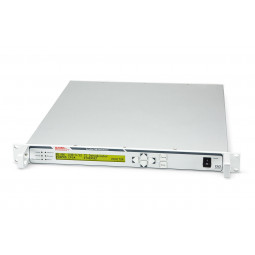WMSDD-TS Work Microwave Transport Stream Demodulator
- DVB-S2 demodulation QPSK/8PSK/16APSK/32APSK
- DVB-S demodulation QPSK
- Normal and short FEC frames, pilots on or off (DVB-S2)
- Physical layer framing with descrambling codes 0 to 262141 according to DVB-S2 standard
- Automatic reception of Roll-Off: 35 %, 25 %, 20 %, 15 %, 10 %, 5 %
- Symbol rates from 500 ksps to 110 Msps
- Data rate max 356 Mbps
- OptiACM and VideoACM
- Gigabit Ethernet data interface
- 2 ASI Output Interfaces (SDD-TS/SDD-DV)
- 6 ASI Output Interfaces for up to 6 Multiple Transport Streams (Option MT6) (SDD-TS/SDD-DV)
- Generic Stream Encapsulation (GSE), Multiprotocol Encapsulation (MPE)
- Network layer 2 or layer 3 operation
WORK Microwave’s high-speed DVB-S2 demodulator SDD is designed to provide demodulation of DVB-S and DVB-S2 signals.
The SDD-IP demodulator provides operators with a platform for receiving IP/Ethernet data over DVB-S2 satellite connections. The device is the corresponding demodulator unit to the DVB-S2 IP modem SK-IP and supports low overhead Generic Stream Encapsulation and Multiprotocol Encapsulation. In combination with the integrated support of OptiACM and VideoACM, the demodulator provides adaptive or variable FEC and modulation setting for point-to-point or point-tomultipoint applications.
The SDD-TS device can be used for receiving digital video broadcast contribution or distribution signals as MPEG transport streams and is suitable for a wide range of applications, including video reception sites, monitoring facilities, and program exchange points. The SDD-DV device combines both operation types in a single device.
The demodulator has two L-band inputs in the range from 950 to 2150 MHz or alternatively one L-band input and one VHF-band input in the range from 50 to 180 MHz, with one input being selected. On L-band inputs, LNBs can be powered directly.
Operating and control – easy integration into your system
The configuration of the demodulator can be controlled via the front panel keys or remotely via RS232, RS422/485 and TCP/IP (over Ethernet). For the remote control addressable packet-based commands, an HTTP Web browser interface, or SNMP can be used. Detailed monitoring of system parameters is possible.

